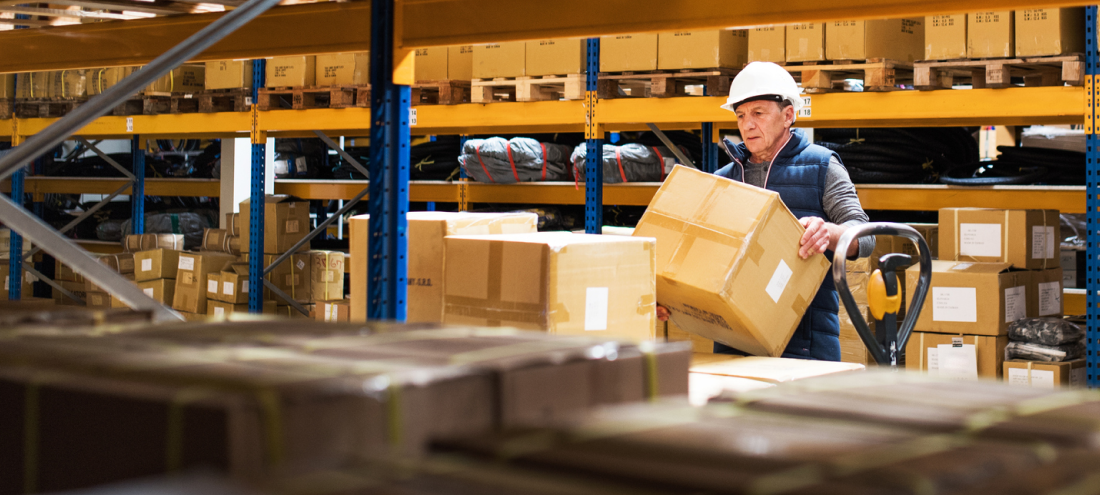Management and prevention of goods transportation damages
In the realm of transportation and logistics, the secure management of goods is an absolutely crucial aspect, if not the most relevant, to ensure the success and reputation of a company.
In this article, we will explore the challenges related to transportation damages, analyzing the causes, adopted safety procedures, and presenting cutting-edge technological solutions to reduce their impact. The protection of goods during the transportation process is a fundamental element for us at C.T.I., as we aim to ensure maximum safety and integrity of products for our clients.
Analysis of Causes: Why Do Damages Occur During Transportation?
Goods damage during transportation can be attributed to various causes. A critical element is inadequate packaging, where incorrect choices in material selection or packaging techniques can expose the goods to significant risks. The lack of proper support and cushioning can make them susceptible to shocks, vibrations, and pressures, thereby increasing the risk of damages.
In addition to packaging, logistical issues should also be considered. Unforeseen delays, route deviations, or improper handling during loading and unloading operations can trigger situations that jeopardize the safety of the goods. It is essential to understand the chain of events that can contribute to damages, addressing gaps in logistical processes and implementing targeted preventive measures.
Another critical aspect not to forget is the variability of environmental conditions. Sudden changes in temperature, humidity, and other meteorological factors can negatively impact sensitive products. Accurate analysis of these variables becomes a fundamental step in preventing damages during transportation.
Safety Procedures to Avoid Goods Damages
Preventing goods damages during transportation is an aspect that can resolve many more situations than one might think. As we have already seen regarding packaging, it is important to understand that simple external protection is not sufficient. The use of suitable and customized materials based on the type of goods is essential. The use of advanced techniques can also work in favor, such as strategic padding and the use of tailor-made containers, contributing to minimizing negative impacts from shocks or abrupt movements.
Operational procedures during loading and unloading phases are equally crucial. Training the involved personnel is useful to ensure safe and careful handling. The adoption of specialized equipment and the implementation of specific protocols help reduce the risk of damages during these critical transport phases.
How to Manage Damaged Goods
In the event of goods being damaged during transportation, prompt action is required. Firstly, practical advice should be provided to customers on how to handle these situations, including timely reporting of damages and procedures for requesting compensation. Relying on C.T.I. also means having a serious and transparent partner actively supporting clients in these situations, ensuring efficient management of issues related to damages.
Economic Impact of Transportation Damages on Companies
The economic impacts resulting from damages during transportation can extend well beyond the direct cost of the damaged goods. Firstly, there is an immediate expense to replace or repair the damaged goods, representing only the tip of the iceberg. These costs can exponentially grow when considering additional expenses related to extraordinary shipments, urgent work, and potential service disruption to customers due to delays or missed deliveries.
However, the economic impact is not limited to these tangible costs. Corporate reputation is another asset to consider, and damages during transportation can seriously undermine it. Dissatisfied customers, negative reviews, and the spread of news about damaged products can harm the brand’s image, compromising the trust of existing customers and discouraging new business.
The impact is also reflected in refund procedures and dispute management. Compensation claims, as we know, can sometimes become a long and complex challenge, requiring significant resources to resolve disputes and maintain customer trust. The long-term effect is evident in customer loyalty, which can decrease drastically if damages during transportation become a constant.
Technological Solutions for Reducing Damages During Transportation
To effectively address the challenge of damages during transportation, cutting-edge technological solutions can be employed. Advanced monitoring sensors, for example, allow constant surveillance of environmental conditions and any impacts suffered by the goods. This real-time monitoring enables immediate interventions to mitigate risks.
Alternatively, artificial intelligence (AI) can be employed to analyze large amounts of data, identifying patterns and trends that may indicate potential risks during transportation. This predictive capability allows for more accurate planning and proactive prevention of situations that could compromise the integrity of the goods.
Furthermore, advanced packaging systems designed to adapt to the specific needs of each type of goods can be integrated. These systems combine innovative materials with customized designs to ensure maximum protection during transportation.
If you are looking for a reliable partner for shipments, contact us now. We are here to offer customized solutions that protect goods and contribute to the success of your business.


